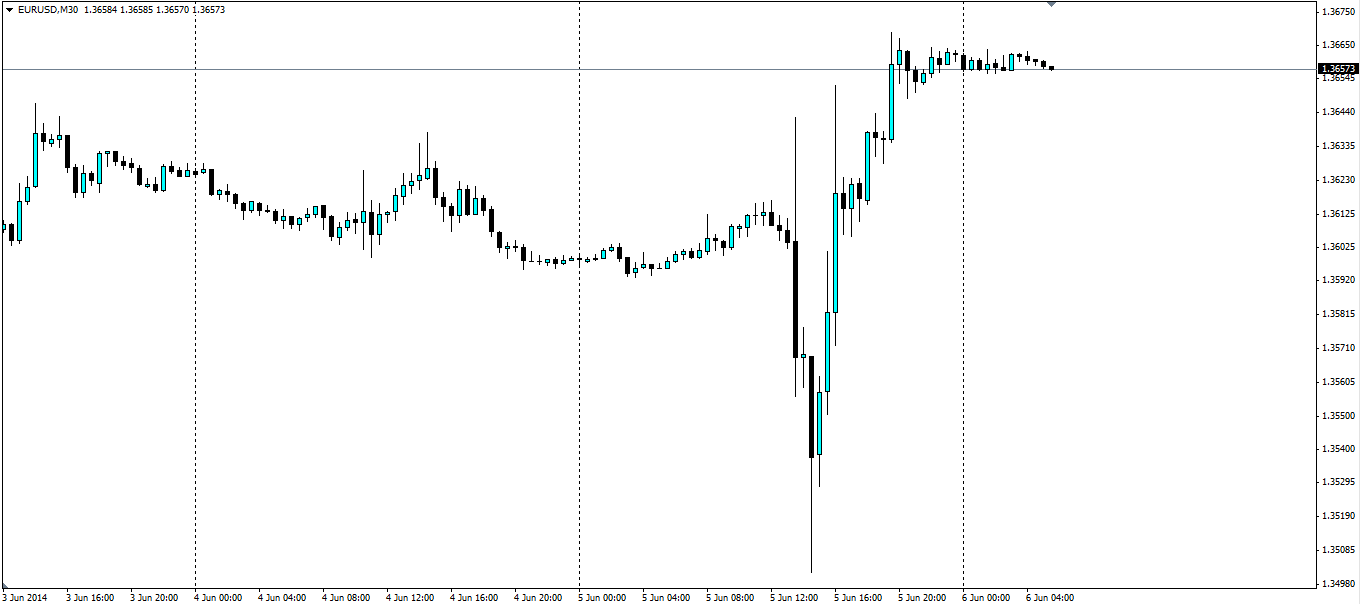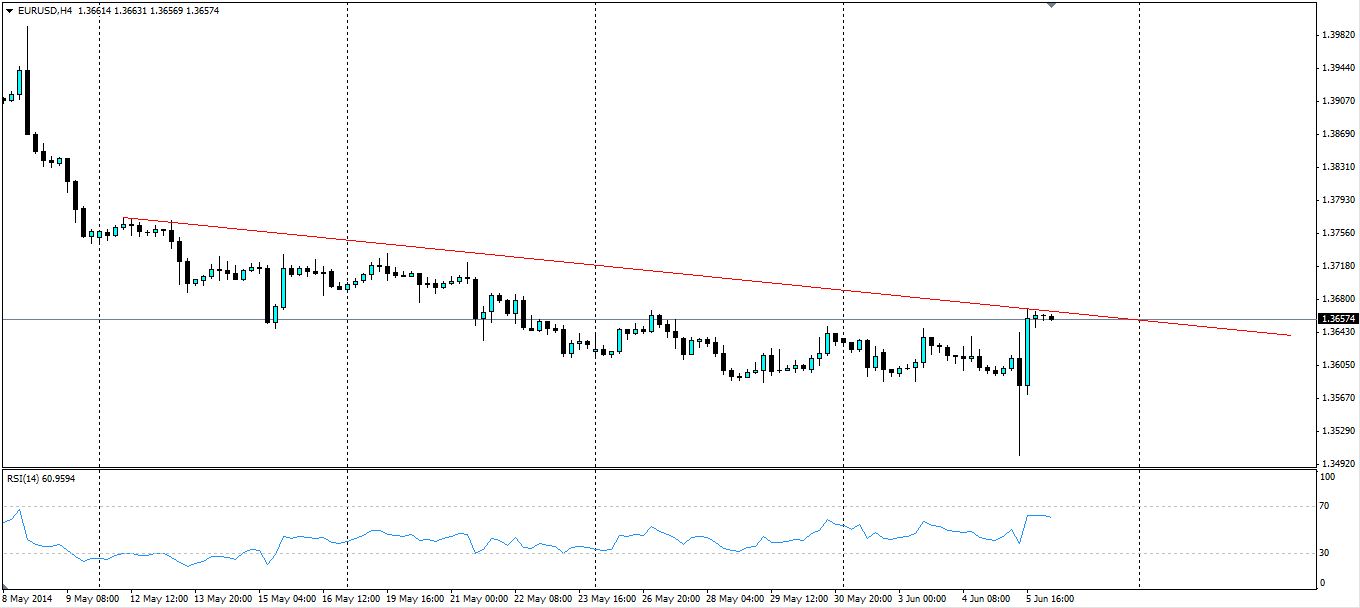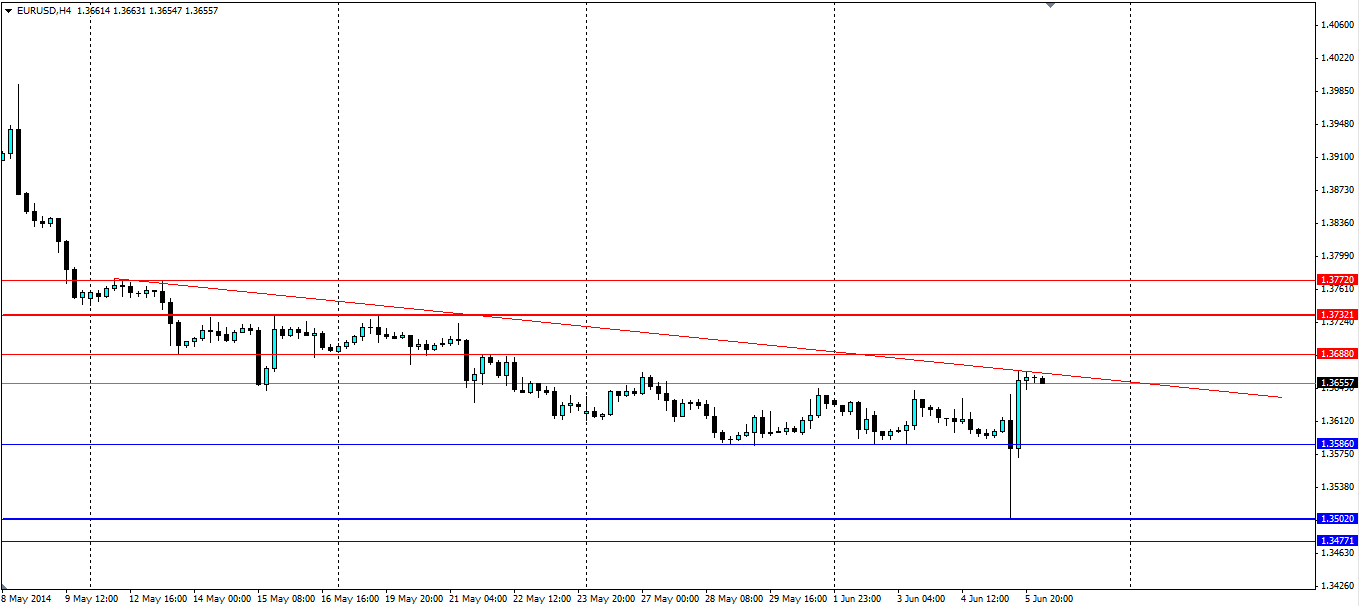The ECB yesterday announced a much anticipated stimulus plan. No one was really shocked that rates were cut, but the differing measures sent the market swinging more than a 60’s party but ultimately, the market was disappointed. The long term should see the Euro test the year-to-date lows, the medium term will be difficult to pick.
Below is the EUR/USD 30 minute chart showing the market’s reaction to the ECB announcement. Clearly relief and euphoria took hold, but once the market digested the news, a bullish rejection was the clear winner.

Source: Blackwell Trader
The unprecedented stimulus package saw the ECB become the first major central bank to offer negative interest rates. That’s right; the ECB will actually charge you to hold money there overnight at a rate of -0.10%. This will encourage banks to lend it to each other or out to businesses. The refinancing rate was also cut, but not to the 0.10% the market was expecting, instead to 0.15%. This explains in part why the EUR/USD rebounded from a 3 month low after the package was announced. The marginal rate was also lowered to 0.40%.
The ECB also opened a €400bn liquidity channel that is tied to bank lending. Banks will be allowed to borrow directly from the ECB up to as much as 7 percent of their outstanding loans to non-financial corporations and households, excluding mortgages. The UK implemented a similar move, but their threshold was 5%. This is known as TLTRO or targeted longer-term refinancing operations. These loans have a maturity of 4 years, or 2 if the money is not lent out. This is designed to encourage banks to lend to businesses.
The glaring omission from the raft of stimulus measures was a Quantitative Easing programme, which the market clearly did not approve of, sending the EUR/USD to its highest level in over a week. Rumour has it that officials will start work on an asset purchase plan and this could be released when the ECB meets next month, or later in the year. Draghi himself said: “Are we finished? The answer is no.”
So where does the Euro go? The long term consensus is for the Euro to hit $1.32 by the end of the year. That may be a little ambitious given the market’s reaction to yesterday’s announcement, but if a QE package is announced, we could easily see the Euro below $1.34 at least.
The short term for the Euro is going to be tough to pick. Nonfarm payroll data is due out today which will no doubt have an effect. The bearish trend looks to be holding on the EUR/USD H4 chart and the RSI looks to show momentum turning back towards the bearish side. The EUR/USD could be a good short play but be mindful the Nonfarm data is the biggest in the month for the USD so the market tends to be volatile.

Source: Blackwell Trader
Support And Resistance
Any moves lower for the Euro will find support at 1.3586, a support level that was tested several times before yesterday’s announcement. Further support can be found just above the psychological 1.35 level at 1.3502, the low hit yesterday and beyond that; 1.3477. The bearish trend will act as resistance, however, any disappointing nonfarm payroll news will no doubt smash through this. Resistance levels above the trend line can be found at 1.3688, 1.3732 and 1.3772.

Source: Blackwell Trader
The announcement by the ECB saw a raft of measures that ultimately disappointed the market as it didn’t quite go far enough without a QE package. The outlook for the Euro is bearish in the long term but the short term should see volatility.
